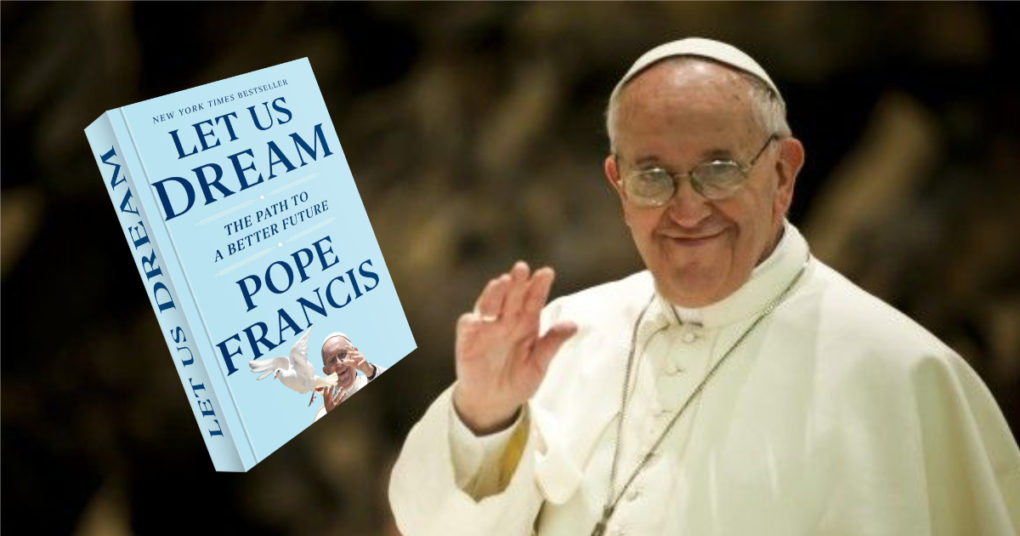Let us dream: The path to a better future
Pope Francis and Austen Ivereigh
Simon & Schuster
2020
160 pages
No one comes through a crisis unchanged. Whether one changes for the better or worse depends on one’s response to that crisis. So argues Pope Francis in the introduction to his new book Let us dream: The path to a better future, co-authored with British journalist Austen Ivereigh (who has already written two biographies of Pope Francis). He sees the Covid crisis as a great opportunity, and a great challenge. He encourages us to grab this opportunity to change ourselves, and the world, for the better. How this is possible, and why we should do it, are the topics of this attractive book. It presents the Pope’s vision of where we stand now, as we confront big issues, revealed in new ways in the light of the pandemic.
Along the way we learn a lot about the Pope’s thinking on many topics. We also get insight into Pope Francis’s life and personal experiences, for example, in how he reacted to three Covid-like crises in his own life, crises which became rich learning experiences for him.
He speaks eloquently about areas such as the systems and ideologies that contributed to this crisis; how politicians can use the associated fears for their own ends; the heroic generosity of so many in coping with the pandemic; about giving women greater roles in the Church and in society generally; about the living environment; about the “isolated conscience” which can replace doctrine with ideology; about learning from the poor about improving society; and about Guardini’s pensamiento incompleto, the importance of unfinished thinking, which allows space for development, rather than seeking and asserting absolute certainties.
I found his reflections on synods interesting. Much of the media wanted to encapsulate each synod into a single-issue confrontation between two rival, entrenched parties. Their big, pre-formulated, story was: on which side would the Pope come down? Either way, he was going to alienate one constituency, thereby presenting the media with their much-desired feeding-frenzy. Meanwhile the main, important themes of the synods were getting no attention, due to this narrow polarisation and obsession with headline-grabbing dramatisations. Reading between the lines one sees Pope Francis making a conscious decision not to dance to their tune, not to let the commentariat dictate what was central and important.
The Church is analogous to a sacrament, combining a visible, material aspect, and an invisible, supernatural dimension. When saying “We believe in the Catholic Church” the Catholic faithful are emphasising more the existence of the latter, the invisible, supernatural dimension, which secular commentators do not see. The Pope shares in the Church’s quasi-sacramentality, being at once a human personality and at the same time Christ’s vicar on Earth, Peter’s successor, the Rock on which Christ builds his Church. A believing Catholic honours, loves and is grateful for both aspects, the natural and the supernatural, mysteriously united in one person.
In this book we can discover more about that human personality, look deeper into the mind of this one man, who is also Christ’s vicar, chosen by the Holy Spirit.
The book is structured in three parts, headed respectively “A time to see”, “A time to choose”, and “A time to act.” There is also a prologue and an epilogue. Having given us his discernment of the issues, in the epilogue the Pope helps the reader ask: What should I do? What can I do? He suggests very practical answers, summarised in two concepts: “de-centre” and “transcend”. These are well worth chewing on.
The book is presented as if every word is written by Pope Francis himself. Yet the flowing English style and idiom do not have even a whiff of translation from another tongue. It reads too well for that. Austin Ivereigh has managed to integrate seamlessly both the Pope’s thoughts and elegant English prose. That’s impressive and adds to the enjoyment of the book.

